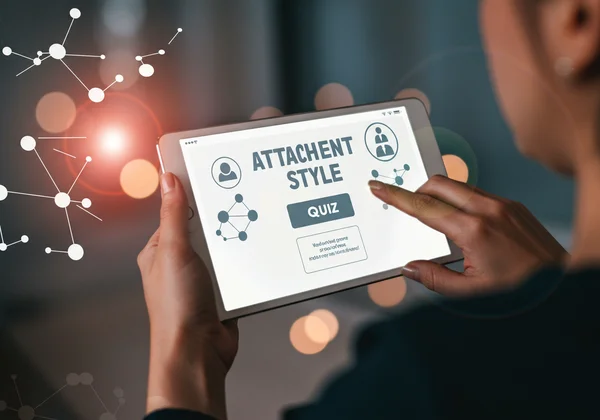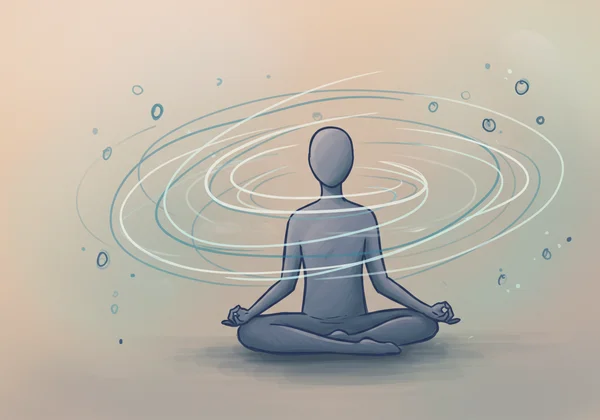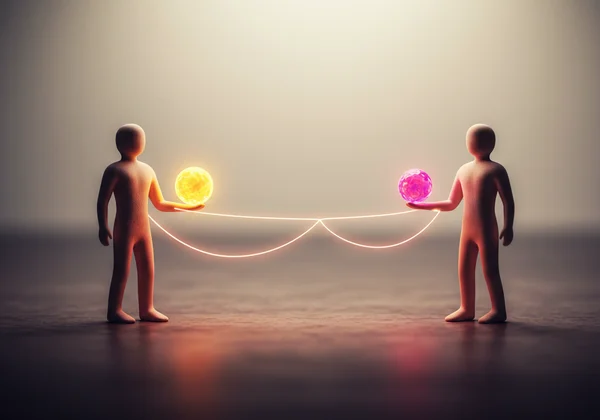Dating Success: Your Early Relationship Attachment Style Quiz Guide
The first few months of dating can be an exciting but confusing emotional minefield. Do you fall into old habits, feel overwhelmed by anxiety, or wonder why your new partner acts a certain way? If you've ever felt lost in early relationships, you're not alone. The key to unlocking these patterns is understanding your attachment style. A comprehensive attachment style quiz provides the clarity you need. Answering "What is my attachment style?" is the first step toward building a healthier connection. This guide shows you how. You can start by discovering your attachment style on our site.

Understanding Attachment Styles in Early Dating
When you start dating someone new, your brain is firing on all cylinders. The thrill of possibility is mixed with the vulnerability of putting yourself out there. This potent combination is what activates your attachment system—the blueprint for how you connect with others, formed in your earliest relationships. It dictates your emotional needs, how you respond to intimacy, and the fears that surface when you get close to someone. Understanding this system is like having a map for the often-uncharted territory of a new romance.
How Your Attachment System Activates in New Relationships
When dating someone new, your attachment system activates, asking critical questions: "Is this person safe? Will they be there for me?" Your response is guided by your attachment style, influencing whether you lean in with excitement, pull back with caution, or feel a surge of anxiety. Recognizing these automatic reactions is crucial for navigating early dating with self-awareness instead of fear.
The Four Core Attachment Styles: What Each Seeks
Attachment theory identifies four main styles, each with a different goal in early dating:
- Secure: Seeks a balance of intimacy and independence, comfortable with closeness and confident in their partner.
- Anxious (or Preoccupied): Seeks maximum closeness and reassurance, but often worries about their partner's commitment and fears abandonment.
- Avoidant (or Dismissive): Seeks independence above all. They value space and can feel suffocated by too much intimacy, often pulling away.
- Disorganized (or Fearful-Avoidant): Seeks closeness but is also terrified of it, creating a mix of anxious and avoidant traits.
Knowing which style resonates most with you is empowering. It's the first step toward conscious dating, and a free attachment style quiz can provide a clear starting point.
Navigating Early Dating with an Anxious Attachment Style
If you have an anxious attachment style, early dating can be an emotional rollercoaster. You crave connection and are an attentive partner, but the uncertainty of a new relationship often triggers deep-seated anxieties. You might over-analyze texts, constantly seek validation, or worry that one wrong move could end everything. The good news is that awareness helps you manage these feelings and build a secure foundation.
Managing Early Dating Anxiety & the Urge to Connect
The core challenge for the anxiously attached is to self-soothe rather than constantly seeking external validation. When you feel that familiar pang of early dating anxiety, pause before you act. Instead of immediately texting for reassurance, try grounding techniques like deep breathing or a short walk. Remind yourself that your feelings are valid, but they may be colored by past experiences, not present reality. Focus on activities that build your self-worth outside of the relationship, reinforcing the truth that you are whole and complete on your own.

Healthy Communication & Boundary Setting for Anxious Daters
Expressing your needs is vital, but how you express them matters. Instead of saying, "You never text me enough," which can sound accusatory, try using "I feel" statements. For example, "I feel really connected and happy when I hear from you during the day." This communicates your need without placing blame. It’s also crucial to set boundaries to protect your emotional energy. This might mean not being available for calls 24/7 or learning to say no to a last-minute date if you need a night to yourself. Understanding your patterns through an attachment style test is the first step to communicating them effectively.
How to Approach Dating with an Avoidant Attachment Style
For those with an avoidant attachment style, the early stages of dating can feel like a delicate balancing act. You enjoy getting to know people, but as intimacy deepens, an internal alarm bell starts ringing. You value your freedom and self-reliance immensely, and the perceived demands of a relationship can feel threatening. You might find yourself creating distance, focusing on your partner's flaws, or feeling emotionally numb just when things seem to be going well.
Balancing Independence and Intimacy in New Relationships
The key for avoidant daters is to create space for both independence and connection. Communicate your need for alone time early, framing it as essential for your well-being, not as a rejection. Schedule dedicated "together time" and protected "alone time" to reduce the feeling of being engulfed. Recognizing that your discomfort with closeness is a pattern—not a reflection on your partner—is a powerful shift. It can help you lean into intimacy instead of running from it.

Signaling Interest Without Overwhelm: Tips for Avoidant Daters
You can show you care without sacrificing your sense of self. Focus on small, consistent gestures of affection rather than grand, sweeping ones that might feel inauthentic or overwhelming. A simple text saying "Thinking of you" or planning a low-pressure, activity-based date can signal interest effectively. Being vulnerable is a challenge, so start small. Share a minor work frustration or a personal goal. Taking an online relationship attachment style quiz can be a low-stakes way to begin the process of self-exploration, giving you the language to eventually share your patterns with a partner.
Building Secure Foundations in the First 3 Months
Regardless of your starting point, the goal is to cultivate a secure attachment. A secure bond is where trust, intimacy, and lasting love can grow. The first three months are a critical period for laying this foundation. It’s about showing up consistently, communicating openly, and creating a dynamic where both partners feel safe, seen, and valued.
What Secure Attachment Looks Like in Early Dating
In early dating, secure attachment doesn't mean a lack of nerves; it means navigating those feelings with confidence. Secure individuals comfortably express their interest and boundaries. They don't play games because they believe in their own worth. They are reliable, responsive, and assume the best of their partner. When conflict arises, they address it directly and repair the connection, rather than withdrawing or escalating.
Practical Steps Towards Earned Security & Lasting Connection
Attachment styles are not permanent. Through conscious effort, anyone can develop "earned security." This journey starts with self-awareness; you must understand your patterns to change them. The next step is choosing a partner willing and able to meet your emotional needs. Finally, practice secure behaviors: communicate needs clearly, be vulnerable in small doses, and learn to trust. The journey to earned security begins now. Take our free quiz to start yours.

Your Next Steps: Building Healthier Dating Habits
Understanding your attachment style isn't about being put in a box; it's about giving yourself a map. It illuminates why you feel anxious when a text goes unanswered or why you need space after an intimate weekend. This knowledge empowers you to break free from old cycles and build the relationship you desire. It transforms dating from a game of chance into a journey of intentional connection. Ready to stop guessing and start understanding? Discover your unique relationship blueprint. Take the free Attachment Style Quiz and unlock the insights for a more secure dating life.
Frequently Asked Questions About Attachment & Early Dating
What are the 4 types of attachment styles I should know for dating?
The four main styles are Secure, Anxious, Avoidant, and Disorganized. Secure individuals are comfortable with intimacy. Anxious ones crave closeness but fear abandonment. Avoidant individuals prioritize independence and are wary of too much closeness. Disorganized people have a conflicting desire for and fear of intimacy. Knowing your style is a game-changer for dating.
Are attachment style quizzes accurate for early relationships?
Yes, high-quality quizzes are very insightful for early relationships. While not a clinical diagnosis, they're based on psychological research and give an accurate snapshot of your relational tendencies. They are an excellent tool for self-reflection, helping you understand your emotional triggers when dating someone new. Our quiz is accurate and provides a solid foundation for this self-exploration.
What's the healthiest attachment style to have in a new relationship?
The Secure attachment style is the foundation for the healthiest relationships. Secure individuals balance intimacy and autonomy, communicate effectively, and trust their partners. However, any style can build a successful relationship. The goal isn't to be perfect, but to be aware and willing to grow towards security.
Can I be both anxious and avoidant during early dating?
Yes. This is characteristic of the Disorganized (or Fearful-Avoidant) attachment style. These individuals feel a "come here, go away" internal conflict. They desire intimacy (anxious side) but are also terrified of getting hurt, causing them to push people away (avoidant side). This can be confusing in early dating, making self-awareness even more critical.